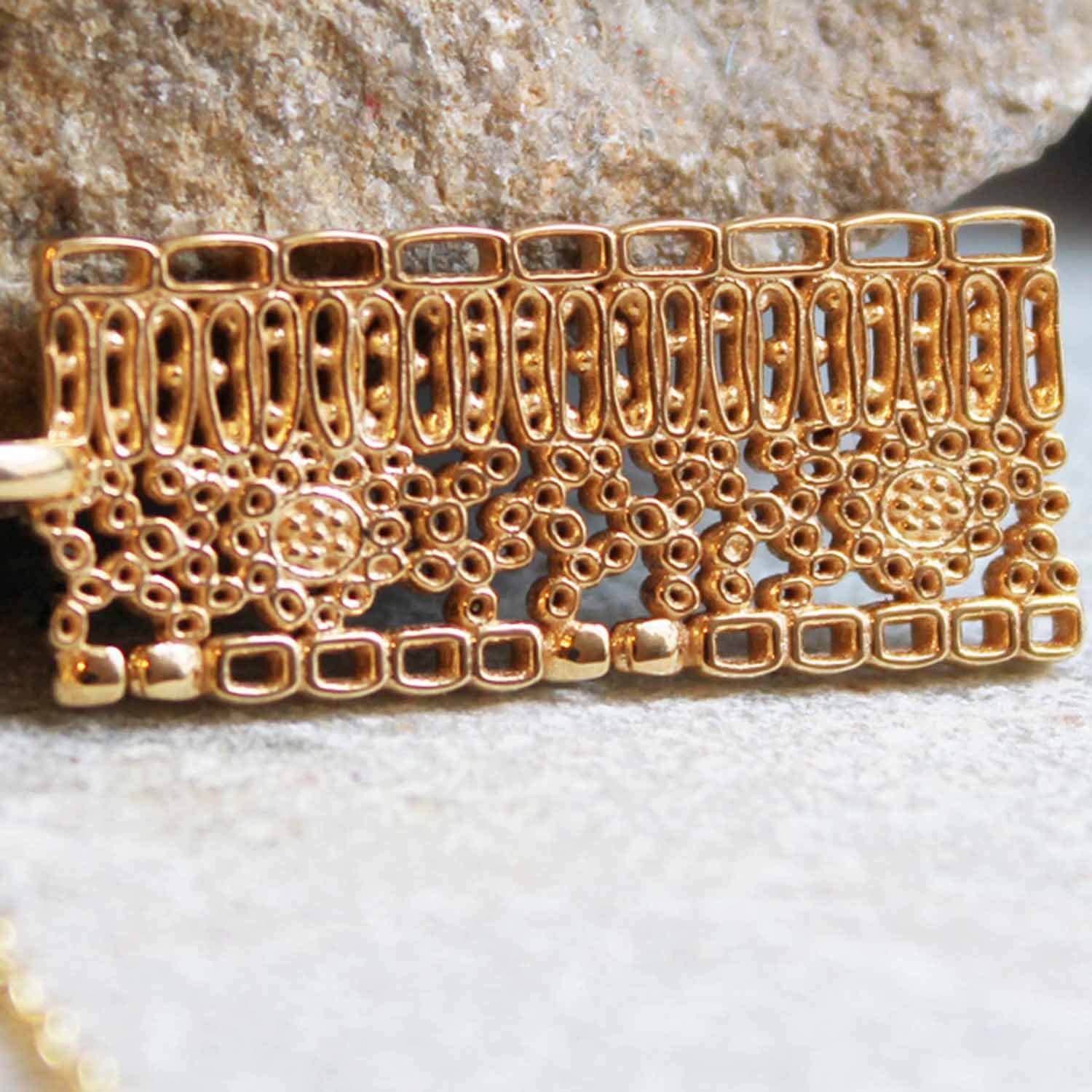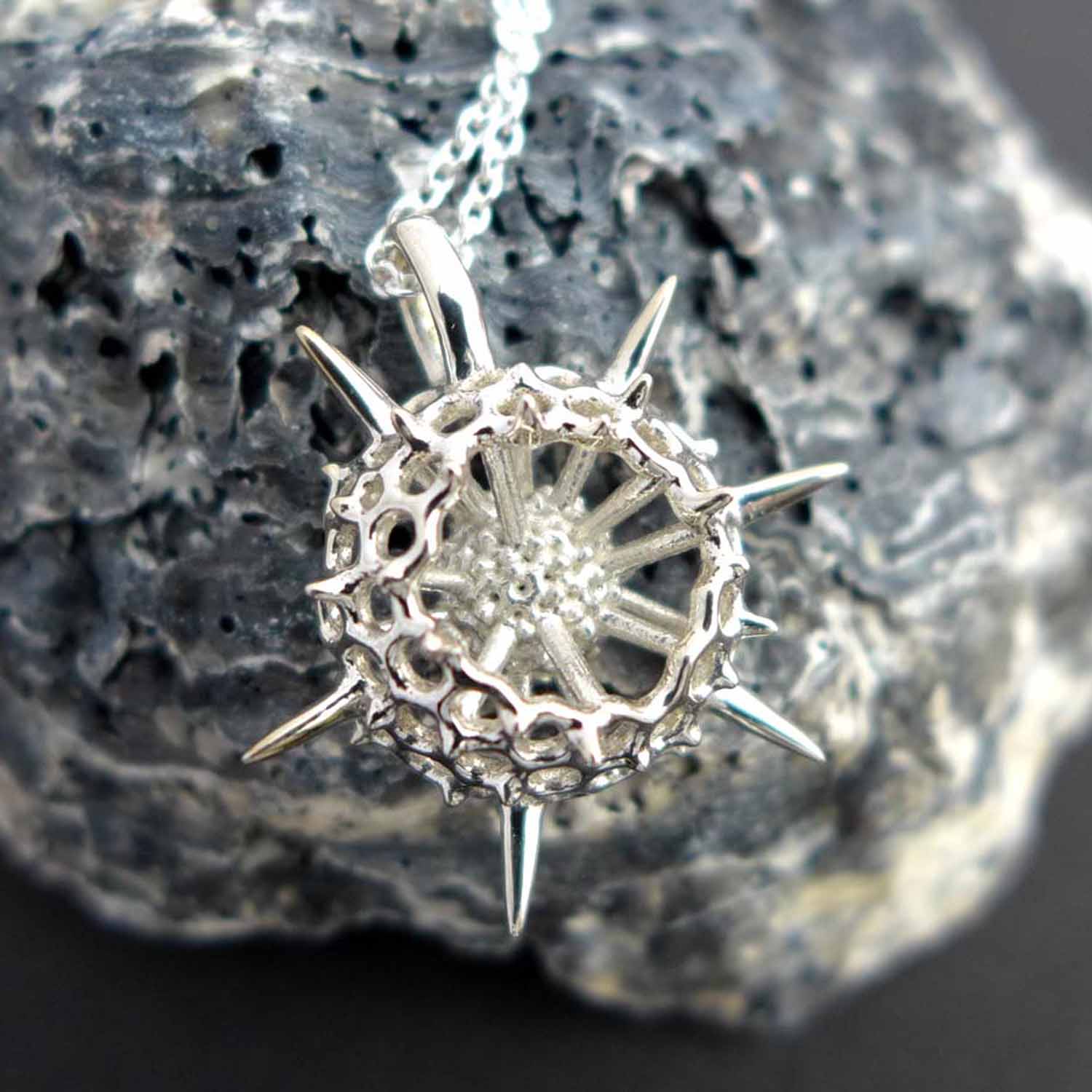Punk Rock Science: how a spiky Radiolarian came to be a bestseller
 Hands down the most popular item at Ontogenie is the Spumellaria design. Available in pendants, earrings and a desk sculpture, this design seems to captivate my customers more than any of my other pieces. The unusual concentric sphere structure of the Polycystinea class of Radiolaria, stabilized with interconnecting spikes (called spicules), was one of my first challenges when I decided to start designing 3D-printed scientific jewelry three years ago. It became my holy grail; if I can do this one, I told myself, then I can tackle any elaborate pattern that nature throws at me.
Hands down the most popular item at Ontogenie is the Spumellaria design. Available in pendants, earrings and a desk sculpture, this design seems to captivate my customers more than any of my other pieces. The unusual concentric sphere structure of the Polycystinea class of Radiolaria, stabilized with interconnecting spikes (called spicules), was one of my first challenges when I decided to start designing 3D-printed scientific jewelry three years ago. It became my holy grail; if I can do this one, I told myself, then I can tackle any elaborate pattern that nature throws at me.

Polycystine Radiolaria have been with us for 500 million years and their siliceous shells are a major component of the sediment on the bottom of the ocean. These astoundingly complex shells serve as defense and ballast for the microorganism residing inside. Prof. Ernst Haeckel drew many versions of these lovely creatures from samples collected on the 1858 voyage of the H.M.S. Challenger. For me, the extraordinary diversity of shell patterns among Radiolaria, Foraminifera and diatoms always begs the question of why these creatures evolved so many different and creative solutions to the same basic problems, defense and flotation. Evolution is remarkable.

And now for the technical particulars: I won't give away all of my secrets for modeling these lovely creatures in Blender, but I will tell you that virtually all of my Radiolarian models started with an icosophere mesh primitive followed by a judicious use of the bevel tool, extrusion of individual faces and the solidify modifier. That and a few other tricks of 3D-printing modeling and the model on the left is what you get.
As for why this design is so popular, I can only speculate. Perhaps we're all intrigued by what 3D-printing can do, or perhaps the dangerous spikes speak to the punk rock soul lurking inside every scientist. I, personally, prefer the latter explanation. Rock on, scientists.






Leave a comment